Disney Heir Charlee Disney, Walt Disney’s great grand nephew comes out as trans and speaks against the ‘Don’t Say Gay’ bill.
‘I could have done more to fight it.’ pic.twitter.com/VruuEB3mC0
— PopCentral (@popcentral_) April 11, 2022
Charlee Corra Disney, a 30-year-old high school science teacher who is the transgender child of Walt Disney’s great-nephew, recently spoke out against Florida’s “Don’t Say Gay” law. But their words underscore the uneasiness with which the House of Mouse has acknowledged its queer workers and fans.
“I had very few openly gay role models, and I certainly didn’t have any trans or non-binary role models” Charlee Disney told the Los Angeles Times. “I didn’t see myself reflected in anyone, and that made me feel like there was something wrong with me.
Mentioning the high rates of bullying, mental illness and suicidality among LGBTQ youth, they added, “Then to put something like this law on top of that? They can’t learn about their community and their history at school, or play sports or use the bathroom they want to use?”
Disney’s fans and employees expressed disappointment that Disney had funded the law’s sponsors and then initially refused to speak out against it. Disney later came out against the law and offered a $5 million donation to the Human Rights Campaign as a form of damage control, but the HRC rejected it. Pixar employees then claimed that Disney executives had cut every attempt to show same-sex affection or LGBTQ characters in its films.
How about we take this to the next level?
Our newsletter is like a refreshing cocktail (or mocktail) of LGBTQ+ entertainment and pop culture, served up with a side of eye-candy.
Disney’s mishandling shouldn’t have been that surprising. Truth is, the Magic Kingdom has a largely mixed record when it comes to showing appreciation for its LGBTQ employees and fans. Here are five instances that demonstrate that:
1985 – Disney drops its prohibition against same-sex dancing in its theme parks

In 1957, Disney instituted a policy banning same-sex couples from dancing at its theme parks, ostensibly to keep patrons from feeling uncomfortable and to stop men from harassing same-sex female dance partners, a Disney spokesperson told the Los Angeles Times.
When a teen male same-sex couple — 19-year-old Andrew R. Exler and 17-year-old Shawn Elliot — were physically removed from the Tomorrowland dance floor for dancing together in 1980, they successfully sued. Disney first pledged to appeal the 1985 court decision but then quietly dropped the policy.
Despite that, the park continued to quietly enforce the policy, especially for slow-dancing same-sex couples, until 1989 when a second lawsuit forced them to drop the policy altogether, Time magazine reported.
1995 – Disney extends partner benefits to LGBTQ employees

Amid the ongoing HIV epidemic and growing attacks on queer people by religious and political leaders during the 1980s and ’90s, Disney began extending health insurance and other employee benefits to same-sex partners of queer employees in 1995.
Disney arrived somewhat late to the game. Many other large U.S. companies, like Charles Schwabb and Ben & Jerry’s, had already been offering such benefits for years before Disney began, according to the Chicago Tribune.
Nonetheless, the move angered social conservatives, compelling the Southern Baptist Convention and other religious groups to boycott Disney from 1996 to 2005.
2019 – After ignoring Gay Days for decades, Disneyland Paris holds its first-ever Pride parade

Since 1991, LGBTQ people have congregated at Disney World to celebrate “Disney Gay Days”, an unofficial gathering where queer patrons wear red shirts to identify themselves.
As the event continued each successive year, Disney used to hang a warning sign for heterosexual visitors that said, “Members of the gay community have chosen to visit the Magic Kingdom today in their recognition of Gay and Lesbian Pride Month,” according to the New York Times. Eddie Shapiro, who co-founded an offshoot of the event at Disneyland in 1998, told Time magazine that Disney employees used to hand out white shirts to any people who accidentally wore red to the park during the event.
To this day, Disney has never officially sanctioned the gathering. However, in 2019, the House of Mouse recognized its LGBTQ patrons by holding a “Magical Pride” celebration on June 1. The event included a late-night event with character meet-and-greets, musical performances and a pride-themed “diversity parade.”
Gay Days has since blossomed to over 100,000 attendees at both the Disney World and Disneyland parks, bringing in an estimated $100 million annually.
2020 – Disney finally incorporates a lesbian character into one of its animated films

Onward was the first Disney/Pixar movie to introduce an unambiguous LGBTQ character. In it, Black actress Lena Waithe voiced Specter, a cyclops police officer, who mentioned, “My girlfriend’s daughter got me pulling my hair out.” Specter’s girlfriend never made it onto the screen.
The moment might’ve felt more satisfying had it not been such a “throwaway,” as many called it. Disney ended up editing out the line from the film’s Asian release so it wouldn’t get banned from theatres. Plus, the moment came after years of Disney teasing LGBTQ audiences with lackluster promises of queer firsts in its films.
Disney promised an “exclusively gay moment” in its 2017 live-action Beauty and the Beast film, only to have it turn out to be a blink-and-you’ll-miss-it moment when the bad guy’s henchman LeFou, dances with a man in the final ball sequence just before the credits roll. Disney later teased a similar moment in its 2019 Star Wars sequel The Rise of Skywalker, only to have it consist of two female extras kissing in the background of a victory celebration.
Disney has since continued to offer representation scraps in its films, with queer-encoded characters in its live-action films like Cruella and Jungle Cruise.
2021 – Disneyland implements a new, more gender-inclusive dress code

In an April 13 update to its employee dress code, Disney eliminated all references to gender and said it would allow all workers to wear single-color nail polish, small and non-offensive tattoos on their arms, up to two ear piercings and pre-determined hairstyles of naturally-occurring colors.
The new dress code also allowed for a greater variety of clothing for male and female employees, provided that their looks still conformed to differently-themed areas in the park.
“As part of our ongoing process … we look at the authentic representation of people and cultures in our stories,” Carmen Smith, executive of Creative Development and Inclusive Strategies for Walt Disney Imagineering told Attractions magazine. “This is an important part of creating a more inclusive environment for guests from all over the world.”
The change marked a departure from Disney’s stricter guidelines that forbade men from wearing long hair or facial hair. Disney Parks, Experiences and Products Chairman Josh D’Amaro, wrote, “We’re updating [our dress code] to not only remain relevant in today’s workplace, but also enable our Cast Members to better express their cultures and individuality at work.”


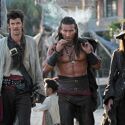

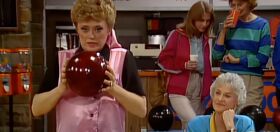


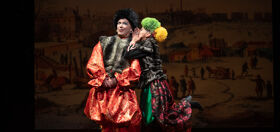
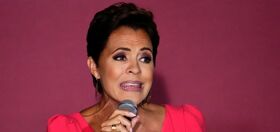
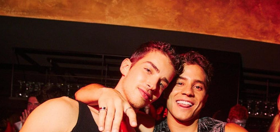
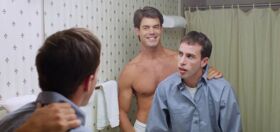


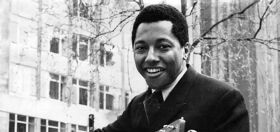


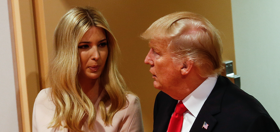
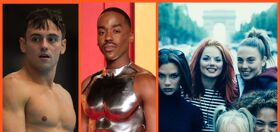
Polaro
On my list of things to do to save the planet, fixing Disney didn’t make the cut.
jt1990
What’s the deal with Disney? It appears they are catching a lot of hate from both straight and queer folks these days. I just saw a hilarious meme on Facebook of Alice from Wonderland pi**ing in a urinal as several male elves look on in shock. This was posted under the caption “Welcome to the New Disney.” Seems like they are doing alright by lgbt standards, but then I see stuff like this on Queerty. Either way I’m not worried. The county fair offers the same rides at a much lower price.